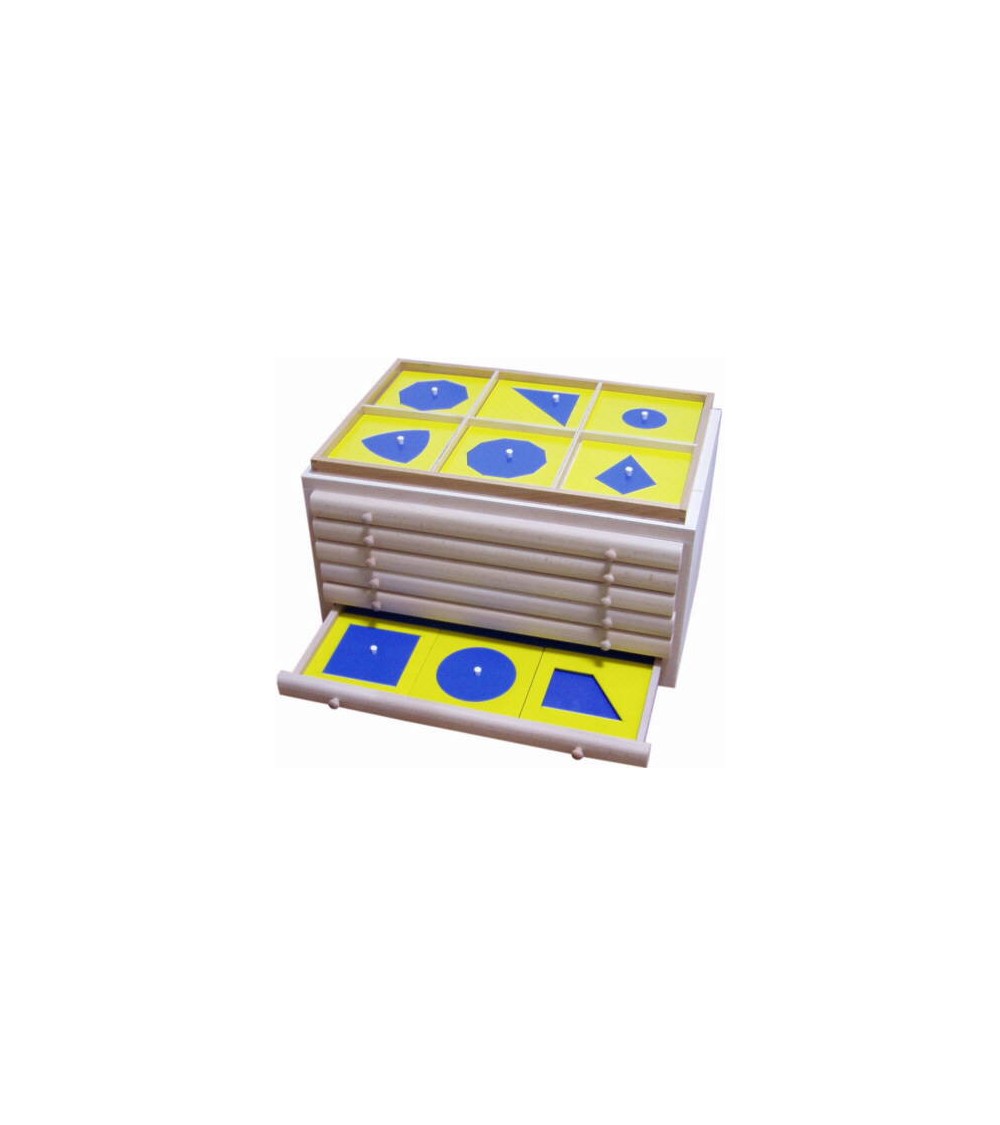Geometric Chest
Geometric chest of drawers complete with introductory frame, ideal Montessori material for getting to know geometric figures
Lacquered wood, approx. 48 x 32 x 24 cm
The geometric chest of drawers is the comprehensive geometry material. Almost all conceivable shapes are available in the chest of drawers. With the geometric chest of drawers, children learn to recognize and name the most varied of shapes quickly and safely. Even complex shapes such as trapezoid, pentagon, etc. are conveyed with ease with the geometric chest of drawers. The child assigns the respective shape to individual outlines and names them. The child is asked to fetch the counterpart of a certain shape.
Use, advantages, areas of application for this Montessori material:
-
- Recognize and name geometric shapes
-
- Compare shapes and surfaces and find similarities
-
- first area calculations
-
- Montessori material for children from 3 years
-
- Mapping outlines
Scope of the Montessori free work material:
1 chest of drawers with 6 drawers, wood, approx. 48 x 32 x 24 cm
1 insertion frame, wood, approx. 46 x 31 x 2 cm
35 shapes outlines, wood, approx. 14 x 14 cm
35 geometric Figure inserts
Instructions for the geometric dresser
The chest of drawers contains 6 drawers, each with different geometric shapes.
In
drawer 1: 6 different triangles
Drawer 2: 6 different rectangles
Drawer 3: 6 circles with diameters from 5 cm to 10 cm
Drawer 4: 6 regular polygons (pentagon to decagon)
Drawer 5: 5 irregular polygons (parallelogram, unequal, acute-angled Triangle, one right-angled and one isosceles trapezoid, diamond)
drawer 6: 4 geometry. Figures (egg, ellipse, circular arc triangle and quatrefoil)
The adult places the basic shapes circle, triangle and square and the corresponding frames in the exercise frame (wooden tray divided into six square areas). The figures are separated so that the figures (circle, triangle and square) are in the top row, their frames (frame with cut out circle, frame with cut out triangle ...) in the bottom row.
As an introduction, it is very helpful for the child if the figure and the appropriate frame are one below the other. It can be mixed later.
The adult takes out a figure with the left hand (three-finger grip - thumb, index and middle finger) and moves around it with the index finger (possibly also the index and middle finger) of the right hand.
Then he goes around the cut-out figure in the associated frame and then inserts the figure. He does the same with the other two figures. When all figures are used, they are placed separately again and given to the child.
All drawers are inserted in the same way. Depending on the child's level of knowledge, either the three most contrasting forms of a drawer are selected and introduced or all of them (the exercise framework is then no longer required).
Variations:
In children with poor concentration, it is advisable to do the exercises with the eyes blindfolded, so that the distracting sense of sight is switched off.
The figures can be transferred to a sheet of paper. First, the figure cut out in the frame is bypassed, next to it the figure. The area of the figure is then filled in with horizontal or vertical lines.

